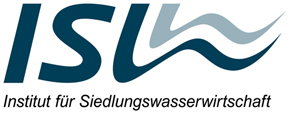
![[Translate to English:] [Translate to English:]](/fileadmin/_processed_/1/4/csm_Schriftenreihe_2018_7_b_6c493ccb13.jpg)
Timur Esemen
Investigations on the Technical and Economical Optimization of the Recovery of Nutrients from Sewage Sludge
Abstract
The research work presented here discusses recycling of nutrients from municipal sewage sludge. Based on operational experiences gained from a full-scale nutrient recycling plant implemented at the WWTP Gifhorn, Germany, technical and economical requirements for nutrient recovery from sewage sludge were investigated. The so-called Seaborne plant in Gifhorn is one of the few full-scale plants existing throughout the world for nutrient recovery from digested sludge. The Seaborne technology consists of an acidic nutrient extraction unit and nutrient recovery units combining struvite precipitation and ammonia stripping. Full-scale investigations on nutrient recovery were accompanied by lab scale experiments, which were conducted to determine technical and economical optimization potentials of the installed technology.
Since it had been observed that unexpectedly high remobilization rates of iron due to acidic sludge extraction caused negative operational impacts, various lab-scale experiments were conducted, in order to find a method to immobilize and bind the dissolved iron ions during acidification. Using simultaneous iron sulfide precipitation, about 90 % of dissolved iron ions could be immobilized successfully and removed from the liquid phase within the extraction process. The knowledge gained from lab- scale experiments was transferred to the full-scale plant leading to plant modifications which improved plant performance significantly. Total phosphorus recovery rate for example could be increased from 35 to 50 %. Prior to the modification of the plant, the ammonia stripping unit had regularly been blocked on account of uncontrolled calcium carbonate precipitation caused by a high pH value. Due to the removal of dissolved iron ions, the calcium recovery rate during nutrient precipitation increased considerably, thus decreasing the dissolved calcium concentration in the process stream and allowing a safe operation of the ammonia stripping unit. The absence of iron ions also improved the quality of the precipitation product.
In order to decrease the acid and base consumption, two alternative nutrient remobilization processes, based on biological or mechanical extraction processes instead of a chemical remobilization, were investigated. Experiments targeting a biological re-dissolution of phosphorus from iron(III)phosphates by the microbial reduction of iron(III) to iron (II) were conducted. Remobilization degrees up to 70 % were achieved under anaerobic conditions at 38 °C by using sucrose as external carbon source. 60 % of total phosphorus could be remobilized by the investigated method without adding an external carbon source.
Half-scale experiments with thermal hydrolysis of waste activated sludge, taken from a WWTP using advanced biological phosphorus removal, showed remobilization rates up to 40 %. Remobilization rates from waste activated sludge containing a high fraction of chemically bound phosphorus (iron phosphate), however, were only marginal.
Since not only the extraction but also the recovery of nutrients led to a high consumption of chemicals, experiments targeting a decrease of chemical consumption during nutrient precipitation were conducted as well. Lab scale experiments showed that commonly used precipitants, such as magnesium oxide, could be replaced by sea water, which contains high amounts of dissolved magnesium and calcium ions. Experiments also showed that stripping of carbon dioxide from the process stream prior to precipitation, reduced base consumption for pH adjustment up to 30 %.
In addition to technical investigations possible applications and combinations of the investigated processes were discussed and economic analyses were conducted for all considered processes. Within a case study, various scenarios were defined each consisting of a different combination of investigated process steps. Investment and operation costs required for the production of an agricultural fertilizer were calculated for each scenario. The calculated production costs were used to compare different process variations and for the economic evaluation of investigated process steps.
Vacancies of TU Braunschweig
Career Service' Job Exchange
Merchandising
Term Dates
Courses
Degree Programmes
Information for Freshman
TUCard
Technische Universität Braunschweig
Universitätsplatz 2
38106 Braunschweig
P. O. Box: 38092 Braunschweig
GERMANY
Phone: +49 (0) 531 391-0
